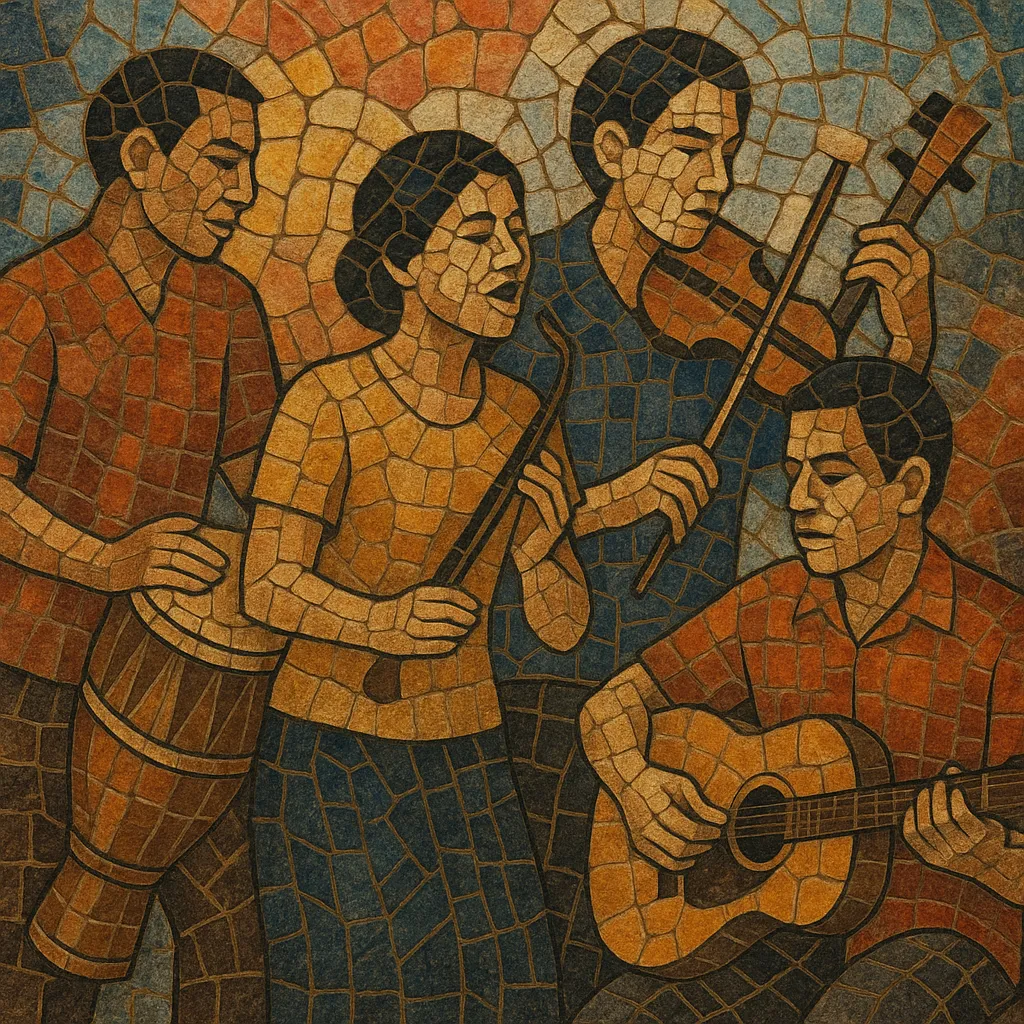Kantruem (also spelled kantrum/kantruem) is a lively dance music of the Northern Khmer (Khmer Surin) communities in northeastern Thailand, especially in Surin, Sisaket, and Buriram provinces.
It is characterized by insistent hand and barrel drums, bright finger cymbals (ching), and agile fiddle lines (tro/so) that weave around call‑and‑response singing in the Northern Khmer language. Traditional ensembles are small and portable, while modern "kantruem samai" augments the core with electric guitar, bass, and keyboards, creating a rustic‑meets‑modern party sound.
The repertoire ranges from courtship and wedding songs to festive social dances. Rhythms are driving and circular, designed to keep dancers in motion, while melodies draw on Khmer modal color with flexible intonation, grace notes, and antiphonal vocal exchanges.
Kantruem’s roots lie in the everyday and ceremonial music of Northern Khmer villages along the Thai–Cambodian border. For generations, small ensembles featuring tro (fiddle), khloy (bamboo flute), ching (finger cymbals), and skor (hand/barrel drums) accompanied dances, weddings, and communal festivities. The idiom’s call‑and‑response vocals and supple modal melody reflect deep Khmer classical and folk lineages while fitting the social rhythms of rural life.
With greater mobility, radio, and local recording in the post‑war decades, kantruem moved from purely local functions onto cassettes and regional stages. During the 1960s–1980s, it increasingly appeared on provincial radio and at cultural festivals in Surin and Sisaket, solidifying a recognizable style and name distinct from neighboring mor lam and luk thung while remaining part of the broader Isan soundscape.
Amplified ensembles and drum machines entered the scene, giving rise to “kantruem samai” (modern kantruem). Artists and community bands blended the traditional percussion‑and‑fiddle core with electric guitar/bass riffs and keyboard patterns. The result was a high‑energy dance format that fit night markets, fairs, and touring shows, sometimes sharing bills with luk thung and mor lam stars.
Kantruem remains a vibrant regional music and a marker of Northern Khmer identity in Thailand. Community ensembles continue to serve weddings and festivals, while modernized acts keep the genre audible on regional media and on digital platforms. Cultural programs and provincial troupes help preserve traditional instrumentation and repertory alongside contemporary performance practice.


